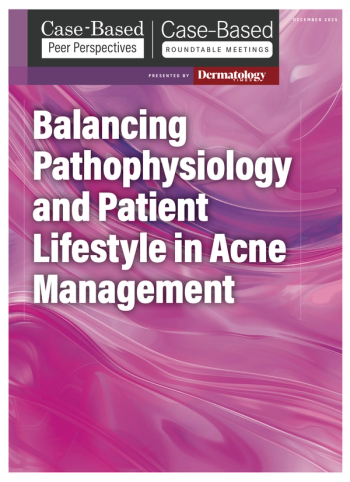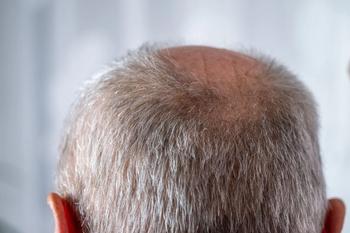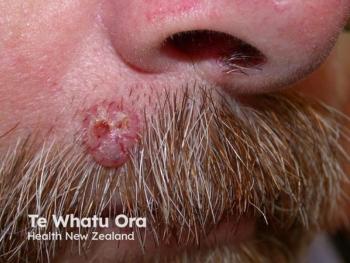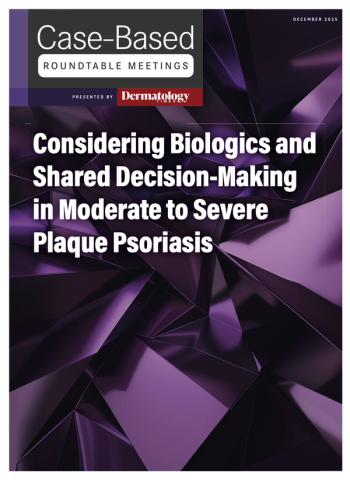
Azathioprine: A Potential Long-Term Treatment for Alopecia Areata
Key Takeaways
- A 10-year study showed azathioprine's 93% average regrowth rate in alopecia areata patients, with significant gender differences favoring males.
- Hair loss decreased from 74.2% to 5.2% over the study, with statistically significant improvements in regrowth and hair loss scores.
A 10-year study reveals azathioprine's impressive 93% hair regrowth rate in patients with moderate to severe alopecia, highlighting its long-term efficacy and safety.
Experts have evaluated the long-term safety and efficacy of azathioprine for patients with moderate to severe recalcitrant alopecia areata.1 The 10-year trial with the systemic monotherapy showed an average regrowth rate of approximately 93% in both male and female participants.
The prospective, nonblinded cohort study featured 63 patients who were treated at the dermatology clinic and skin and stem cell research center of Imam Hospital, Tehran University of Medical Sciences. Over 56% were male with a mean age of 24.62. The oldest participant was 59 and the youngest was 8. Participants had a disease duration of at least 6 months, which could include anything from patchy baldness to alopecia totalis, and were not treated for at least 1 month before the study began. Mean disease duration was 36 months for males and 30.78 months for females. The nonscarring alopecia patches also needed to cover 20% or more of the scalp.
The daily dosage for each participant was calculated at 2 mg/kg of body weight. Clinicians performed routine laboratory tests, which were repeated every 2 months, and measured thiopurine methyltransferase activity before the trial began. Investigators used the Severity of Alopecia Tool (SALT score) to measure changes in hair regrowth on the scalp. A score of S0 indicated no hair loss, while a score of S5 indicated 100% regrowth. High-resolution photographs were taken at baseline, months 1, 2, 3, 6, and then every 2 months for the next 10 years. Any adverse events throughout the study were recorded.
The average percentage of hair regrowth was 92.69%. Statistically significant differences between men and women were observed at year 1, year 4, and each year thereafter, with a higher regrowth rate in male patients. One patient experienced complete scalp regrowth after the first year of treatment. Additionally, after 10 years, the rates of regrowth for eyelashes and eyebrows increased from 50.87 to 67.68 and from 46.54 to 76.52, respectively. Several male patients also experienced beard and body hair regrowth, but this was not systematically evaluated.
The mean percentage of hair loss decreased from 74.2% pre-treatment to 5.2% after 10 years. At baseline, male hair loss was at an average percentage of 72.45, while female hair loss was at an average percentage of 76.54. Like hair growth levels, statistically significant differences between men and women were observed at year 1, year 4, and each year thereafter. One male patient in particular completed 10 years of azathioprine and did not experience hair loss 5 years after stopping the drug. Hair loss scores also improved from 5.56 to 0.67. All of these changes were statistically significant (p = 0.0001).
Most patients who did not respond adequately by the end of year 3 or 4 discontinued treatment. Many of the reported adverse effects were mild and transient. Two female patients developed mild anemia, but this resolved after reducing the dosage of azathioprine. A male patient also reported mild leukopenia 3 years into the trial, but this returned to normal when the dose was lowered.
Azathioprine, which contains anti-inflammatory and immunosuppressive properties, is only approved by the US Food and Drug Administration for organ transplantation and severe rheumatoid arthritis. It was developed over 5 decades ago, but its exact mechanism of action is currently unknown. A past study lasting 6 months has proven the short-term efficacy and safety of azathioprine for alopecia, with an average regrowth rate of 52.3%.2
“Although the differing evaluation methods in these studies prevent direct comparison, the higher regrowth rate observed in our study suggests that AZA may be more effective over the long term,” the authors concluded.
Future double-blind, controlled studies can confirm azathioprine’s long-term effectiveness in patients with recalcitrant alopecia areata.
References
1. Farshi S, Mansouri P. Efficacy and Safety of Long-Term Azathioprine Therapy for Severe Alopecia Areata: A 10-Year Cohort Study. J Cosmet Dermatol. 2025;24(5):e70187. doi:10.1111/jocd.70187
2. Farshi S, Mansouri P, Safar F, Khiabanloo SR. Could azathioprine be considered as a therapeutic alternative in the treatment of alopecia areata? A pilot study. Int J Dermatol. 2010;49(10):1188-1193. doi:10.1111/j.1365-4632.2010.04576.x
Newsletter
Like what you’re reading? Subscribe to Dermatology Times for weekly updates on therapies, innovations, and real-world practice tips.


















